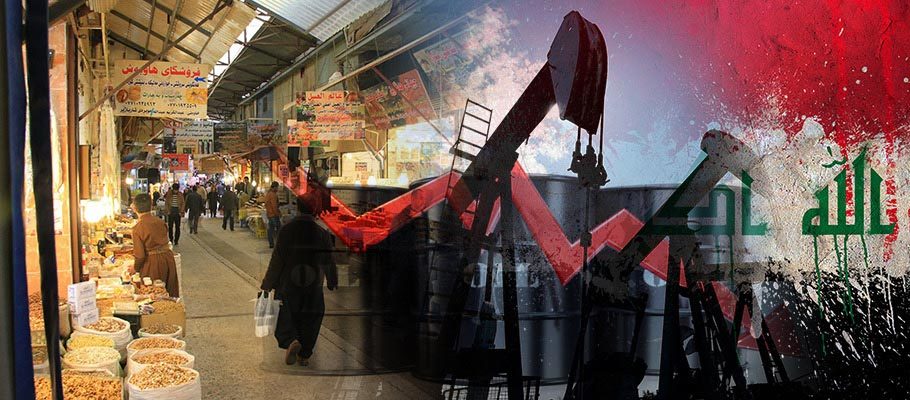
Published: March 11th, 2020
Oil prices sank by 30 per cent at the start of the week after Saudi Arabia slashed export oil prices in retaliation for Russia's refusal to agree production cuts. It was the sharpest drop in oil prices since the 1991 Gulf War.
Plunging crude prices jolted already jittery financial markets as investors counted the mounting global economic costs of the coronavirus epidemic. Currency and equities markets began the week in a state turmoil as a result, with recession fears dominating trading strategies.
The price drop happened after Moscow told a meeting of the Organization of Petroleum Exporting Countries (OPEC) that it would not support voluntary production cuts designed to stabilise the market. Oil investors had already been watching a significant drop in demand caused by efforts to limit the spread of Coronavirus or COVID-19. Analysts still expect oil consumption to fall further, which would be only the fourth time in 40 years that prices have seen a decline.
Given that the full impact of the epidemic on oil demand is still being counted, Russia is said to have argued that it was too early to adopt deeper production cuts. Civil unrest in Libya has already led to a reduction of ca. 1 million barrels per day.
Analysts believe Russia's reluctance is driven by an objective to capture market share from struggling shale producers in the US, which have seen their margins squeezed to breaking point by low oil prices.
Shale producers don’t take part in OPEC output cuts. Russia believes this gives an unfair advantage to US shale companies which benefit from alliance efforts to keep oil prices afloat.
Russian oil producers have proven to be resilient in the face of low oil prices, pumping oil at record levels for the past two years. It stayed within the confines of with OPEC+ targets for three months in 2019, though that was influenced in part by contamination issues on the important Druzhba oil pipeline.
Collapsing oil prices have struck another blow to US oil producers, many of which need oil prices to stay north of 65 dollars per barrel to break even. Job losses have been the norm across the sector while many E&P investments have been put on hold. More than 40 production companies have declared bankruptcy in 2019. Statistics from oil industry law firm Haynes and Boone mark the total count of US producers going into administration at 200-plus, starting from the beginning of the oil price crash in 2015.
As the globe’s largest oil exporter, Saudi Arabia has retaliated against Russia by cutting its April price per barrel by 6 dollars to 8 dollars, plunging market prices for Brent crude by more than 30 per cent to 31 dollars – returning to levels last seen before OPEC and Russia agreed an alliance on output targets in 2016.
The oil-shock has also instilled a sense of panic in currency markets, triggering some of the most significant price moves since the global financial crisis in 2008.
Reopening after a weekend filled with coronavirus headlines, markets saw the yen leap to approach the critical 100 level against the US dollar. Commodity and risk currencies from Australia to Mexico all dropped sharply.
Analysts said that concern about the threat of recession was intensifying around the globe, driving demand for positions in yen and gold, while sending investors away from commodity currencies like the Australian and Canadian dollars that are presumed to be vulnerable to global growth risks.
The breakdown of the relationship between Russia and Saudi Arabia has had extended consequences that also saw oil-backed currencies such as the Norwegian krone drop sharply from the start of trading on Monday.
Panic selling of more than a dozen risk & commodity currencies dulled the benefits of the US Federal Reserve’s emergency rate cut last week.
Traders now appear to be taking cover in safe havens as the collapse in crude prices adds to risk of recession and general slowdown from the spreading COVID-19 epidemic. In the Eurozone Italy has instituted severe travel and other restrictions on freedom of assembly and movement across the country, adding fuel to growing worries about the virus.
As the week began, the Australian dollar dropped by nearly five per cent against the greenback, its biggest one-day decline since 2008. The yen rose by more than three percent, prompting speculation that the Bank of Japan may need to intervene.
Emerging-market currencies are also feeling the pain. The South African rand slumped 7.8 per cent against the US dollar while the Mexican peso slid by more than 8 per cent.
The yen also surged to all-time highs against the peso and rand as retail investors used their margin accounts to boost net-long positions on the two currencies.
Gold made significant gains at the start of the week, with analysts suggesting prices could breach $1,700 an ounce resistance, according to Bloomberg Intelligence.
By mid-week, the dollar had steadied after opening day losses against the euro, yen, and Swiss franc. Analysts say risks to the greenback remain high, even as monetary policy begins to blend in a multi-lateral response to the coronavirus epidemic.
The greenback pushed higher as bond yields bounced and US equity futures rose. President Trump has been more vocal on the US response to the outbreak with a press conference announcing new measures on Tuesday. Treasury Secretary Steve Mnuchin said the White House as meeting with bank executives to discuss a coordinated rollout of new measures to soften the economic impact of the virus’s spread.
Analysts are suggesting however, that it may be too early to call a bottom in the dollar.